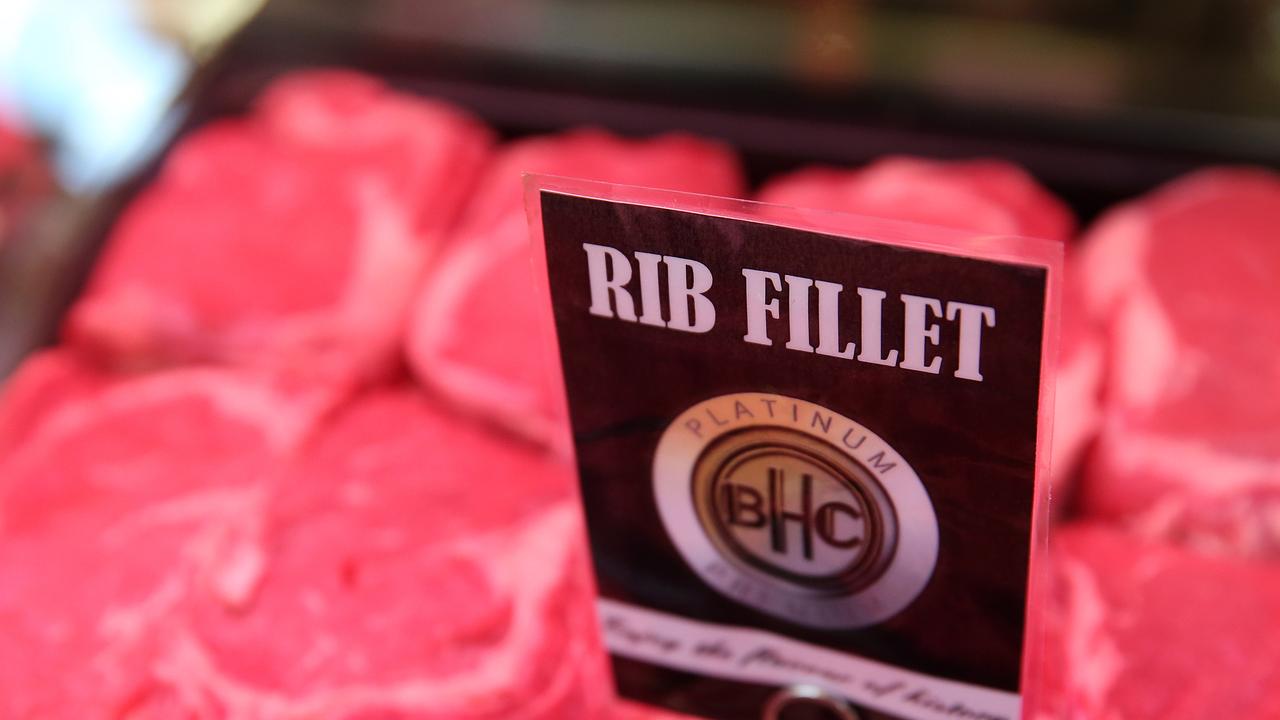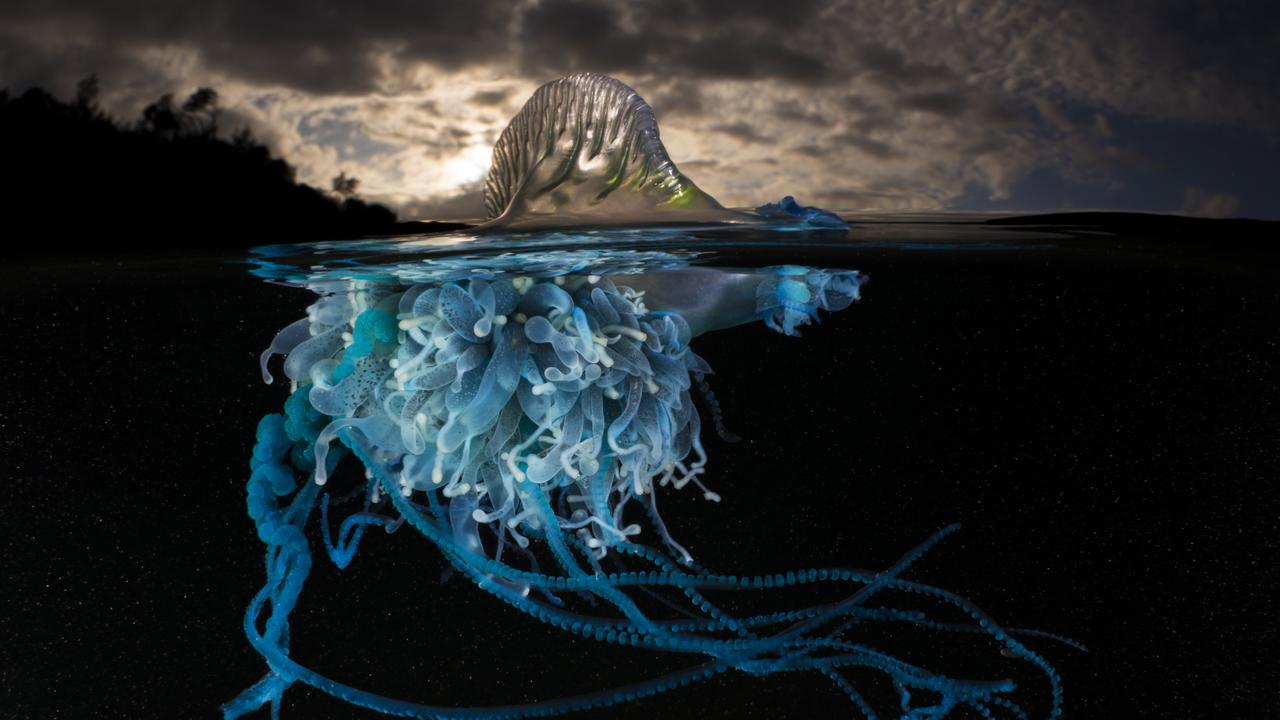Otto the whale claims centre stage at Western Australian Museum
Otto the whale has been hanging about since 1897 but now he’s taken prime position in the Western Australian Museum.
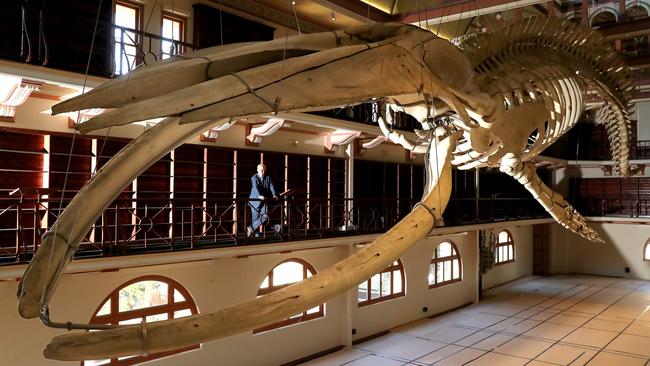
Otto the blue whale has been hanging about since his discovery in 1897 but now he’s finally taken prime position in the reborn Western Australian Museum.
After several impromptu displays over the decades, including in a shed, Otto has become the first and largest artefact to be installed in the just-completed $398m museum building.
His journey from seashore grave to scientific artefact has spanned 120 years.
Otto was washed on to the shores of Busselton beach, south of Perth, in 1897.
An enterprising young passer-by, Daisy Locke, staked it out with three spears and her umbrella, hoping to sell the whale’s blubber.
Instead, the WA Museum’s taxidermist, Otto Lipfert, was hastily sent to flense the carcass and convey its giant bones — by horse and cart, then train — to the museum’s collection in Perth.
The four-tonne skeleton now hangs in the refurbished Hackett Hall, one of four historic buildings encased in the gold-tinged bulk of the city’s new museum, which is due to open in November.
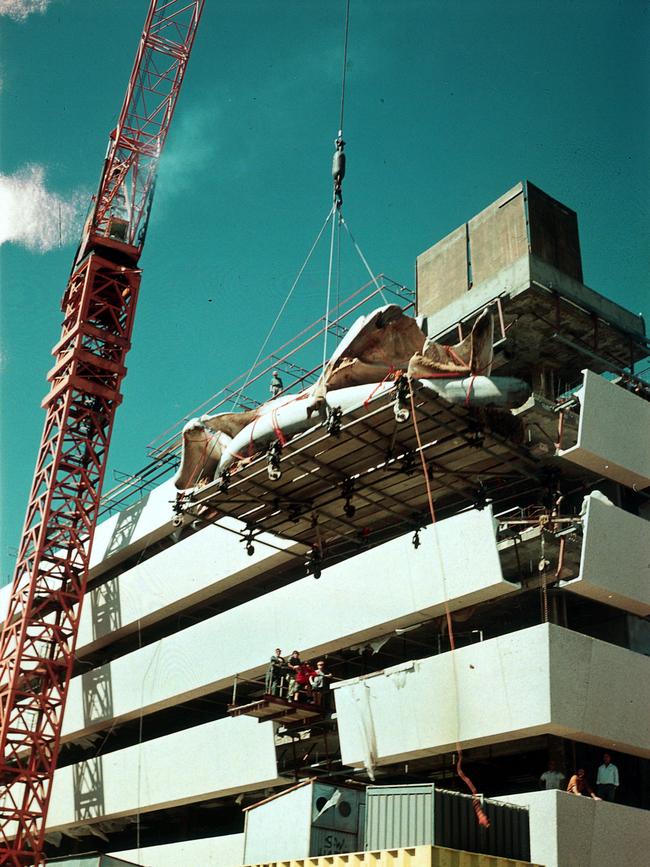
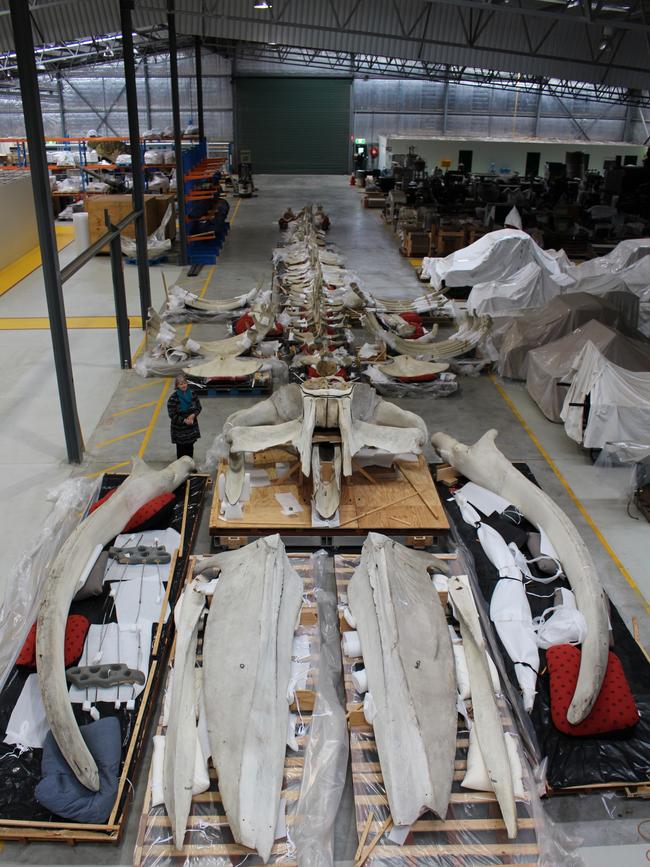
Museum director Alec Cole said the blue whale skeleton was one of few in the world on display. “But no blue whale has been seen like this before because it’s mounted in a feeding position, in a halfway roll as it scoops up masses of krill,” Mr Cole said.
He said the skeleton had been cherished by generations of children visiting the museum since the late 1800s.
“It got a free pass back into the new building because there would have been a riot if we hadn’t displayed it,” he said.
Premier Mark McGowan said the new museum would become “one of the great buildings in the state”. And while he would only guarantee free adult entry for 18 months after its opening, he announced the new museum would “always be free” for children to visit.

